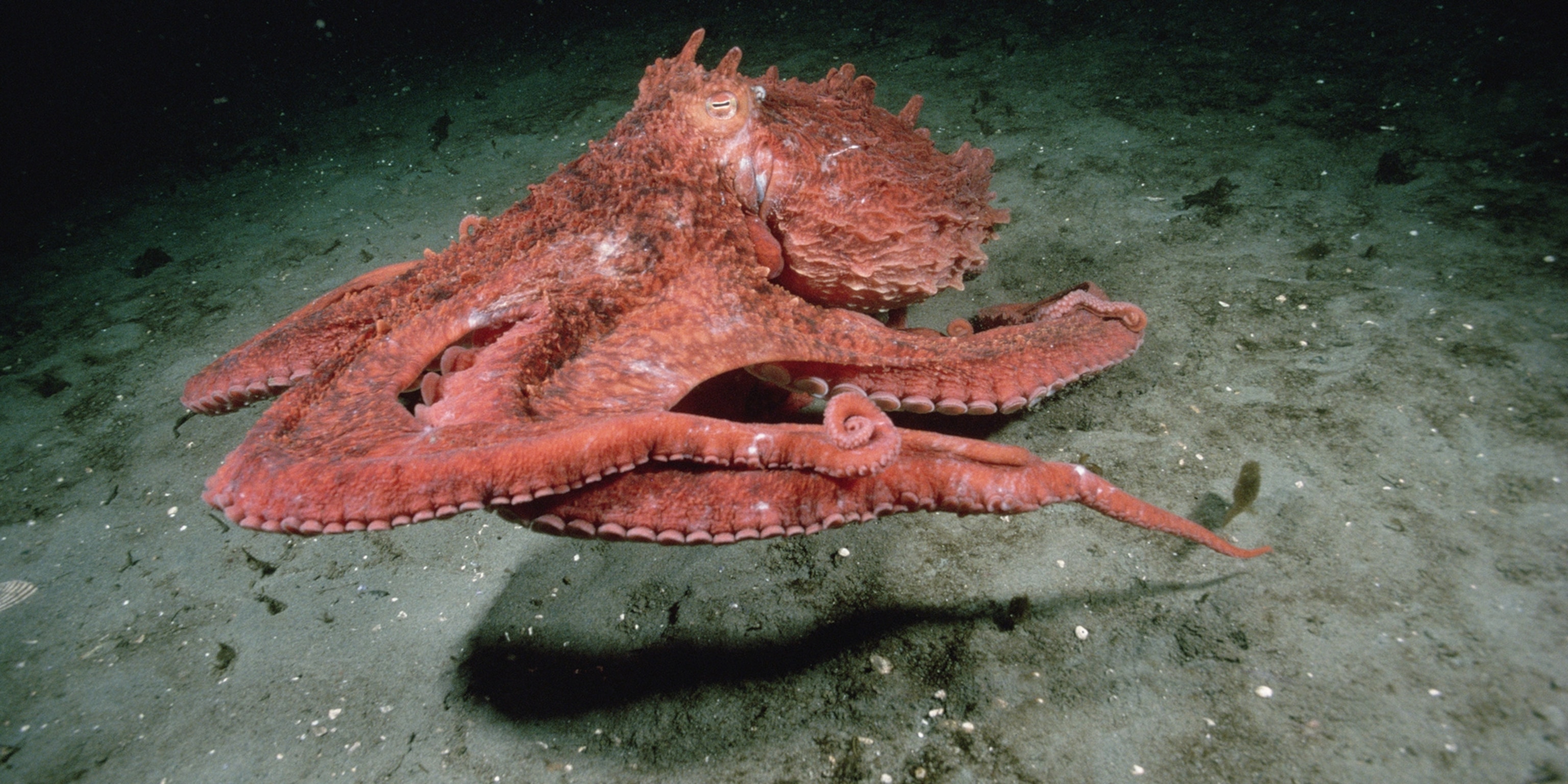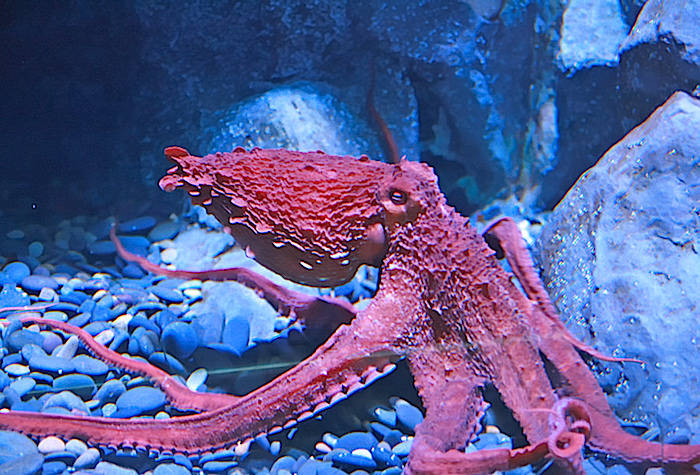Surprisingly yes; giant pacific octopi have three hearts. Not only that, but they have 9 brains and blue blood!
Before we get into the gorgeous and somewhat shocking anatomy of the magnificent group of cephalopods known as giant pacific octopi, let’s discuss the elephant (or octopus) in the room. The plural word for octopus has long been a mystery. Using conventional English grammar rules, we should add an ‘es’ on the end to make ‘octopuses’. In my opinion, this looks a little silly. If you want to be really fancy, you can go the Greek route of saying ‘octopodes’. To be completely honest, this is my preferred octopus plural, but i understand it’s not as well known and so i’ve compromised. ‘Octopi’ doesn’t sound as grand and isn’t as fun to say, but it’s the best of both worlds. It’s a Latin pluralization which is appropriate since ‘octopus’ itself is a Latin word. So there, from now on I’ll be using ‘octopi’.

Anyway, enough of all the boring linguistics (sorry, we all know it’s easy to get carried away with the exciting world of grammar and syntax!). Moving swiftly on, let’s talk about the amazing biology of giant pacific octopi. (or giant pacific octopodes, or giant pacific octopuses or just giant pacific octopus, whatever you want to call it).
Giant pacific octopi organs
A weird subheading for sure, but a fitting one i think.
The three hearts of giant pacific octopi might seem like overkill, but actually they all have a function. An octopus’ body is pretty much entirely made up of muscle, except two plates to support their head and their beak. The giant pacific octopus has two smaller hearts that supply blood to the creature’s gills; a very very important survival function. The other, larger heart is responsible for keeping blood circulating round the rest of the body. So even though at first glance you might think they have FAR too many hearts; i assure you they are all put to good use!

Moving on to the brains, this is where it somehow gets even stranger (if that’s even possible). Giant pacific octopi don’t have just one brain like the rest of the animal kingdom, that would be pathetic! Instead, they have nine total brains. There is, as you might have guessed, one single central brain that oversees the entire body. Independent of this typical animal brain, there are separate clusters of nerve cells in each of the eight arms. These are responsible for movement and are the reason that the eight arms can move independently of one another. But, the central brain makes nine and means they can all work together towards a single goal.

The blood of the giant pacific octopus contains a special protein called hemocyanin. This protein is rich in copper and improves oxygen circulation in cold environments. As the ‘cyan’ hidden in the name suggests, this protein is the reason that the blood is blue!
Thanks to a specialized system of muscles, nerves and pigment sacs called chromatophores, giant pacific octopi are able to camouflage themselves near instantly; amazing!
Extra information
Animal-Club provides animal parties or animal handling workshops. You will be able to see, learn and interact with many wonderful animals with the help of our presenters. Our mobile zoo has many friendly animals such as rabbits, tarantulas, geckos, vinegaroons and more, perfect for an animal party. We can also come over to your school for an animal school visit or arrange for an animal workshop with us where the children can learn about looking after animals and animal behaviour, and have fun too.



